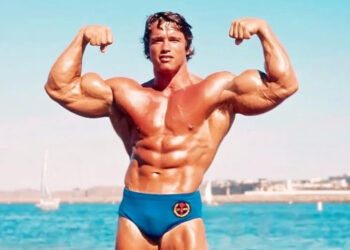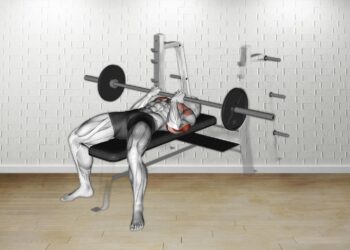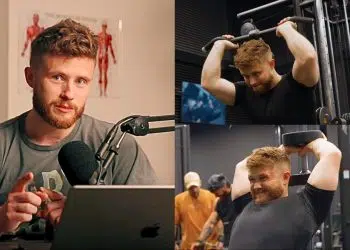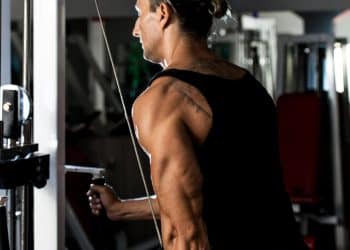You must prioritize triceps training to maximize your upper arms’ strength and aesthetic potential. When most people (unfamiliar with bodybuilding aesthetics) think about muscular arms, they no doubt visualize bulging biceps. Consequently, when they begin a training regime, they focus too much on the biceps and not enough on the triceps.
However, the biceps consist of two heads, whereas the triceps have three. As a result, the triceps generally contribute more mass and overall strength.
As a personal trainer with 10 years of experience, I’ve helped many people build sleeve-ripping guns. In this article, I reveal the seven best triceps exercises and their variations to optimize your tricep development.
Recent Updates: On July 18, 2024, Fitness Volt’s Contributing Editor Andrew Peloquin (NFPT-CPT) and Senior Editor Vidur Saini (American Council on Exercise-CPT) updated the article and added actionable expert tips throughout the piece to improve the reader experience.
Level Up Your Fitness: Join our 💪 strong community in Fitness Volt Newsletter. Get daily inspiration, expert-backed workouts, nutrition tips, the latest in strength sports, and the support you need to reach your goals. Subscribe for free!
7 Best Triceps Exercises For Mass and Strength
Here are the most effective exercises for building bigger and stronger triceps:
- Dips
- Close-Grip Bench Press
- Floor Press
- Kickbacks
- Tricep Extensions
- Triangle / Diamond Push-Ups
- Cable Pushdowns
1. Dips
| Sets & Reps | 3 x 8-12 (or to failure) |
| Equipment Needed | Parallel Bars or Dip Station |
| Target Muscles | Triceps (all heads), Chest (lower pectoralis), Shoulders (anterior deltoid) |
The dip is among the most basic triceps exercises. It was popular during Arnold Schwarzenegger’s era of bodybuilding and is just as popular 40-odd years later.
“Dips are the squat for your triceps,” says Saini. They engage all three heads of the muscle and provide a massive growth stimulus.
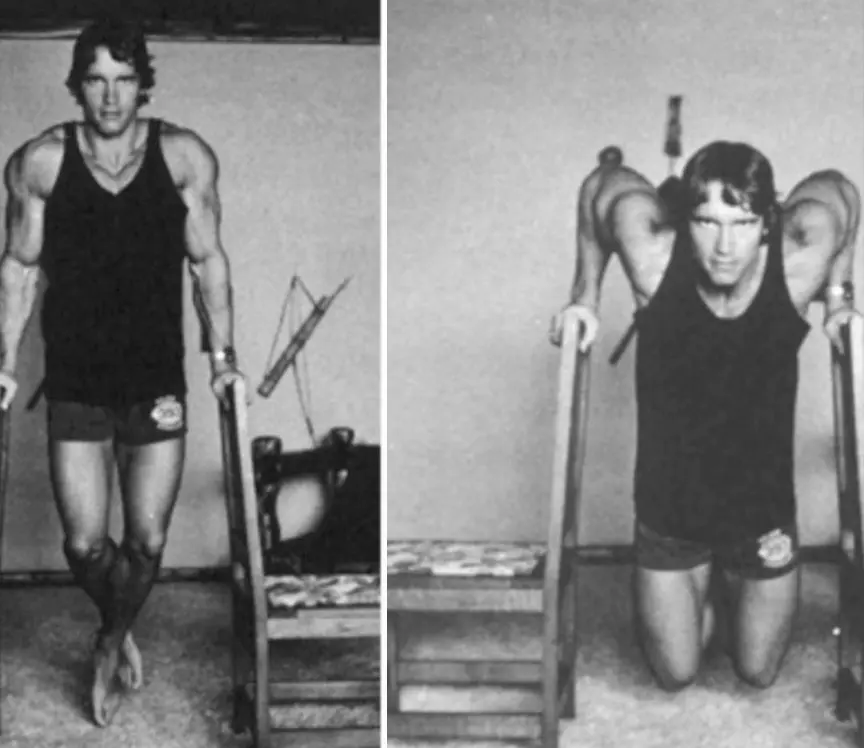
But perhaps the most appealing aspect of the dip is that there are just so many different ways to do it. You have bodyweight dips, weighted dips, and machine dips. But you can even do different variations within these options. Not to mention, the convenience is one reason many people include this exercise when training the triceps. You only need a solid object such as a chair, bench, bed, or any similar object that’s raised a few feet off the ground.
And if done properly, even the more advanced exercisers will find it challenging.
One ACE (American Council on Exercise) study also found that dips highly activate the triceps muscles compared to many common variations.
Pro Tip: At the top of each rep, actively protract your shoulder blades (push them together) to further engage your serratus anterior and improve scapular stability.
| Difficulty | Intermediate |
| Progression | Weighted dips (add a weight belt or hold a dumbbell between your feet) |
| Regression | Assisted dips (use a dip assist machine or resistance band) |
Dips Variations:
a. Captain’s Chair / Power Tower
The Captain’s chair or power tower is a common piece of workout equipment found in most fitness centers. It usually has dip bars, pull-up bars, and a padded back so that you can do leg lifts all in one station. It’s ideal for stronger individuals who can support their entire body weight using their upper body muscles.
It’s also easier to use additional resistance with a weight belt or even by holding a dumbbell between your feet. Not only that, you can shift your body weight forward and really train your chest and shoulder muscles, too. The versatility of this piece of training equipment makes it a very popular choice for a variety of training needs.
b. Machine Dips
Machine dips are a great alternative to bodyweight dips, especially for people who aren’t strong enough to do the latter variation. Two common types of machines are an assisted dip machine and a seated dip machine. Either of these will get the job done.
c. Bench / Chair Dips
If you have a bench, chair, countertop, or anything similar, you can do dips. In fact, many prefer to do it this way rather than using the power tower. And that’s really why so many people love this exercise in particular.
If you do it correctly, it can be very challenging. Plus, you can add a plate on your lap whether you do it with your knees bent, legs straight out on the floor, or legs elevated. You can also perform dips using two chairs faced back-to-back, in which you’ll place your hands on the tops of the chair backs (just be careful, as the chairs can flip over).
Then, if you really want to take it up a notch, try the one-arm bench dip.
2. Close-Grip Bench Press
| Sets & Reps | 3 x 6-8 |
| Equipment Needed | Barbell, Bench |
| Target Muscles | Triceps (all heads), Chest (inner pectoralis) |

If you really want to increase the size of all three heads of the triceps, most would agree that the close-grip bench press should be included in your training regime. The biggest benefit of this movement is that you can load it very heavy.
The range of motion needed for the close-grip bench press is short compared to the basic bench press. This allows you to press using mostly triceps while limiting chest activation as a result.
The close-grip bench press is a great compound movement for triceps, but it’s crucial to maintain a slight arch in your back and keep your elbows tucked in to prevent shoulder strain, explains Saini.
Pro Tip: Think about bending the bar by squeezing your hands together as you press. This internal rotation cue activates the triceps to a greater extent and enhances the mind-muscle connection.
| Difficulty | Intermediate |
| Progression | Pause reps |
| Regression | Dumbbell close-grip press |
Close-Grip Bench Press Variations:
a. Barbell Close-Grip Bench Press
The most common variation is the barbell close-grip bench press. Aside from being able to train heavy on this movement, it also helps to develop stabilizer muscles due to having to balance the weight.
b. Dumbbell Close-Grip Bench Press
The close-grip dumbbell press is another great option, usually performed with the hands in a neutral position and close together. Dumbbells are a very functional tool that can help identify and correct right-to-left imbalances. They also allow for more versatility (e.g., hand position, portability, no need for a spotter, etc.).
Not to mention, dumbbells require more stabilization than barbells, which is a functional benefit.
c. Smith Machine Close-Grip Bench Press
The Smith machine is a great variation because you’re better balanced and stabilized because you’re locked into the apparatus. It can be harder to stabilize a free weight barbell with the hands close together, so you can definitely understand why this variation is often preferred.
With the Smith machine, you don’t have to focus as much on overall body stabilization, which allows you to focus more on the press.
3. Floor Press
| Sets & Reps | 3 x 6-8 |
| Equipment Needed | Barbell |
| Target Muscles | Triceps (all heads), Chest (entire pectoralis), Shoulders (anterior deltoid) |
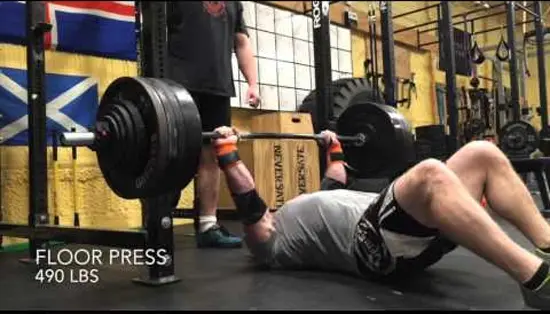
The floor press limits your range of motion because your elbows cannot lower past your torso. Therefore, you’re not activating the chest to the same degree as you would with most pressing variations.
That’s why many lifters will utilize this movement to improve lockout strength. The triceps play a significant role in this aspect of the press.
Saini advises beginners to seek the help of a spotter to unrack and rack the barbell to limit injury risk.
Pro Tip: Pause for a split second just above the floor at the bottom of each rep. This eliminates any momentum and forces the triceps to initiate the upward movement, maximizing muscle fiber recruitment.
| Difficulty | Intermediate |
| Progression | Tempo reps |
| Regression | Close-grip dumbbell floor press |
Floor Press Variations:
a. Barbell Floor Press
For this variation, it’s recommended that you do it next to a power rack so that you can rack and unrack the bar. It’s also a good idea to have a spotter nearby if lifting heavy as you don’t have the luxury of just dropping the weight as you do when using dumbbells.
But using a barbell is a good idea if you’re looking to build your overall pressing strength and/or improve your lifts in a powerlifting competition.
b. Dumbbell Floor Press
As we just discussed, using dumbbells can be a safer way to do this exercise, especially for the less experienced. However, you still have to be careful about how and where you drop the weights. You also have the luxury of being able to position your hands more comfortably.
c. Machine Floor Press
There are dedicated floor press machines that are actually very good to use due to the advancements in technology. However, the Smith machine is a much more common piece of equipment. These machines are obviously going to be your safest options because when you’re done with a set, the weight stays locked into one position.
So, you don’t really need a spotter or to throw your dumbbells on the floor.
4. Kickbacks
| Sets & Reps | 3 x 10-15 per arm |
| Equipment Needed | Dumbbell |
| Target Muscles | Triceps (especially long head) |
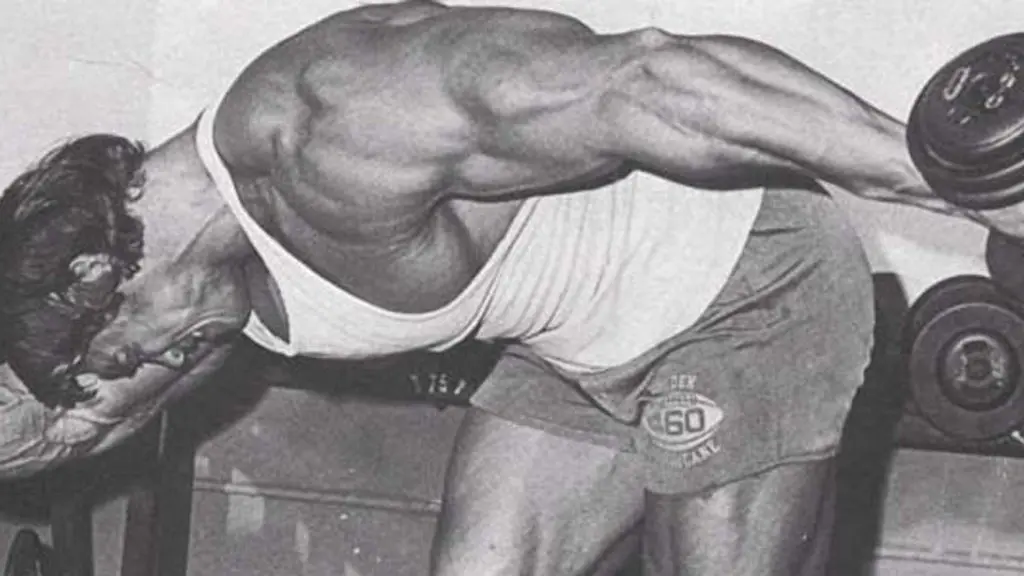
Tricep kickbacks may be thought of by many hardcore lifters as a sissy exercise. Because for one, you can’t go very heavy compared to compound exercises. Secondly, it likely has a bad reputation due to a common belief that it’s a toning exercise from having been featured in countless cardio training videos with the exerciser using pink 5-pound dumbbells.
But believe us when we tell you, the tricep kickback is a phenomenal tricep builder. In fact, many of the world’s best trainers would agree because it offers something that most triceps exercises don’t.
It’s a superior exercise for working the long head of the triceps due to its attachment to the shoulder. And the only way to really maximize the activation of this head is to extend the arm back behind the body which engages the action of the tricep at the shoulder joint.
To better understand how this works, do this:
- Stand upright and really flex your tricep with your arm/s extended by your side/s. Make a mental note of the degree of muscle contraction.
- Now, lean forward, then extend your arm/s behind your body so that they’re parallel to the floor. Really flex your tricep.
You should have felt the contraction better when your arm was extended behind your body. And this is what we were trying to explain regarding the attachment to the shoulder.
To further prove how effective the tricep kickback is, the same ACE-sponsored study we provided for dips found the kickback to elicit an impressive amount of muscle activation. In fact, it finished ahead of dips, pushdowns, extensions, and the close-grip bench press. This was determined by using volunteers and electromyographic (EMG) testing.
In addition, the head researcher for this study, John Porcari, Ph.D., explained that “Most people’s triceps are relatively weak, especially if you isolate them. If you’re doing the kickbacks correctly, it doesn’t really take a whole lot of weight to get a good workout.”
And there’s your answer if you thought the kickback was a sissy exercise. Due to the position required for this exercise to be performed correctly, it’s a very challenging exercise, and you don’t need a lot of weight. So yes, you can build lots of muscle as long as you’re utilizing progressive overload (e.g adding more weight or performing more reps in an effective rep range).
Pro Tip: To prevent swinging and ensure isolation of the triceps, keep your torso slightly angled forward and maintain a neutral spine throughout the movement.
| Difficulty | Beginner |
| Progression | Perform with a cable machine |
| Regression | Cable pushdowns |
Kickbacks Variations:
a. Dumbbell Kickback
The dumbbell kickback is possibly the most common variation. However, if done incorrectly, it can quickly become less effective and largely a waste of time.
What we’re pretty much trying to say is that the eccentric (negative) portion of this exercise should not be a hammer curl. Oftentimes, you’ll see people lower the weight from the extended position and proceed to curl the dumbbell toward their chest.
Why shouldn’t you do this? It’s simple. You’re taking the tension off of the triceps, and you’re doing extra, unnecessary work that’ll tire you out faster and throw off your technique.
There’s no need to bend your arms past 90 degrees, and you may even benefit more from stopping short of 90 degrees, which will keep more tension on the triceps.
b. Cable Kickback
Many would argue that the cable kickback is superior to the dumbbell variation. That’s because cables keep tension on the muscles throughout. However, we’d say it just depends on how you perform the exercise. Either can most likely be equally effective with proper technique and ideal range of motion.
You can also use any handle that you prefer (e.g., single rope, single grip, etc.). Many people also just grip the end of the cable, which works really well.
c. Resistance Band Kickback
Resistance bands are one of the handiest and most versatile training tools available. Not to mention, they’re cheap, so you can pretty much have a low-cost cable setup that you can use at home or anywhere. You can stand on the bands or wrap them around a low object, and it’s just as good as using cables or even dumbbells.
5. Tricep Extensions
| Sets & Reps | 3 x 10-15 |
| Equipment Needed | Dumbbell or Cable Machine |
| Target Muscles | Triceps (all heads) |
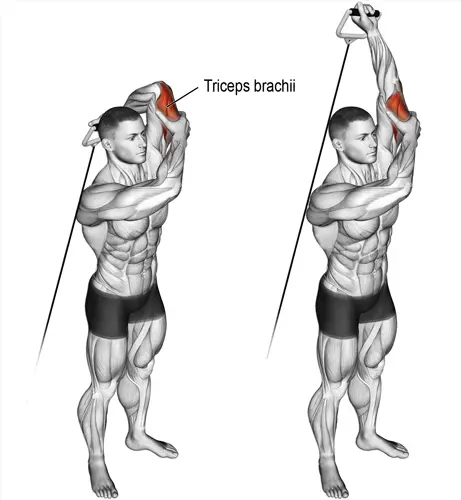
Tricep extensions are a must simply because of the deep stretch that you get in the muscles which you don’t really get with any other exercise. And we all know how beneficial it is to get a good stretch in a muscle. In fact, some research suggests that the stretch under load may be equally or even more important than the contraction for hypertrophy. (1)
However, there is much debate about this, and some believe the concentric portion is more important. Based on what we know, you don’t want to leave either portion out if you want to experience maximum gains.
Now, compared to other triceps exercises, extensions tend to cause elbow pain and discomfort. It’s definitely not for everyone, but for most healthy individuals, the best way to avoid this is to warm up with other triceps exercises or do them after those exercises.
Overhead tricep extensions provide a unique stretch on the long head of the triceps, which is crucial for maximizing muscle growth, says Saini.
Pro Tip: Extend your arms completely overhead and then slightly lean forward. This will increase the stretch on the long head of the triceps, enhancing its activation and growth potential.
| Difficulty | Beginner |
| Progression | Use a single arm variation, perform with a cable machine |
| Regression | Seated tricep extensions |
Extensions Variations:
a. Lying Extension
The lying extension is a very good variation that may even allow for a better stretch than does a seated extension. It also offers a few advantages because you can adjust your position to where it’s not placing a lot of stress on your shoulders. This is often called the skull crusher because the bar is lowered to the forehead rather than behind the head.
You can also use relatively heavy weights with the lying extension, and as far as options go, any training tool will work. However, it’s always good to mix things up, so feel free to use a barbell, dumbbells, or cables.
b. Overhead Extension
The overhead extension is also a very good tricep exercise that allows you to get a good stretch. It was even placed above the lying extension for muscle activation in the ACE study on the most effective triceps exercises.
Level Up Your Fitness: Join our 💪 strong community in Fitness Volt Newsletter. Get daily inspiration, expert-backed workouts, nutrition tips, the latest in strength sports, and the support you need to reach your goals. Subscribe for free!
You can use a fixed barbell, dumbbells, cables, machines, etc for this movement.
There are a few issues with using big dumbbells, though. They can knock into the back of your head and place uncomfortable stress on your shoulders because you have to keep the barbell away from your head. If you’ve been training for a while and are proficient with a dumbbell, then that’s great.
Otherwise, we’re just throwing the possible inconveniences out there.
c. Machine Extension
There are some really state-of-the-art machines that allow you to mimic the triceps extension. Some even allow you to extend your arms down by your sides, working against the resistance, while others have you extend your arms directly out in front of you.
And to be honest, they all feel really good when training the triceps.
6. Triangle / Diamond Push-Ups
| Sets & Reps | 3 x To Failure |
| Equipment Needed | None |
| Target Muscles | Triceps (all heads), Chest (inner pectoralis) |
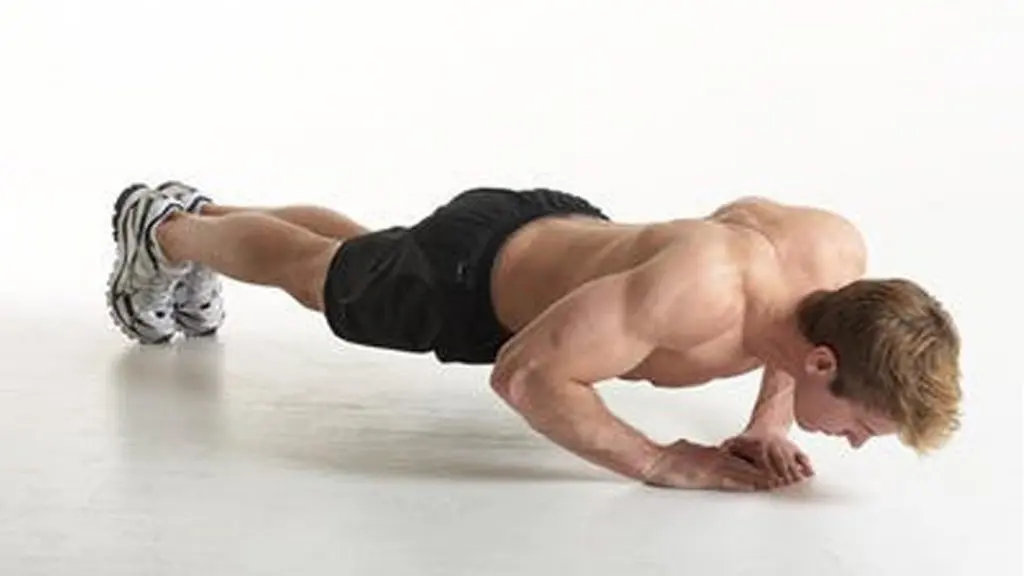
In the same ACE study that we mentioned several times previously, the triangle push-up came out on top for triceps activation compared to other common exercises. As a matter of fact, it scored perfectly for hitting the long and lateral head, whereas none of the others did.
But how?…
According to John Porcari, the triangle push-up showed better tricep activation because you can’t really cheat with this bodyweight exercise.
This makes total sense. If you really think about it, if you’re doing push-ups correctly, the only way you’re completing a rep is if you can push yourself up. That’s not to say you’ll cheat or use momentum with other triceps exercises. But the temptation is definitely there with certain exercises.
Push-ups are a great indicator of relative strength, as they require a solid strength-to-weight ratio to perform correctly.
Pro Tip: As you lower your body, actively screw your hands into the floor by externally rotating your shoulders. This will enhance stability, protect your joints, and increase triceps engagement.
| Difficulty | Intermediate |
| Progression | Elevated feet diamond push-ups, decline diamond push-ups |
| Regression | Standard push-ups, incline push-ups |
Triangle / Diamond Push-Ups Variations
a. Basic Triangle Push-Up
The basic version is essentially the same as a regular push-up, except your hands are close together to form a triangle. This places the majority of the load on the triceps, and it is really an ideal type of exercise because you can do it anywhere.
If you lack upper body strength, you can do triangle push-ups on your knees. This is also an effective method for continuing a set if you’ve burned out during the standard variation.
b. Decline Triangle Push-Up
We really love decline push-up variations because they emphasize the upper chest muscles, train the shoulders, and shift a lot of load onto the triceps. For this advanced push-up exercise, you’ll elevate your feet onto a raised object while your hands are on the ground.
If you’re not decently strong, work on the basic variation and then try this one out.
c. Incline Triangle Push-Up
This variation involves elevating your upper body onto an object while your feet remain on the floor. In addition to blasting your triceps, doing push-ups with your arms positioned lower than your pecs emphasizes the lower chest fibers or abdominal head.
This is also an easier variation than the first two because you’re pushing against a smaller percentage of your overall body weight. Therefore, if you lack optimal upper body strength, this is a great starting point because you can use a variety of objects to do your push-ups (e.g., bench, chair, stairs, wall, etc.).
7. Cable Pushdowns
| Sets & Reps | 3 x 10-15 |
| Equipment Needed | Cable Machine, Rope, or Bar Attachment |
| Target Muscles | Triceps (all heads) |
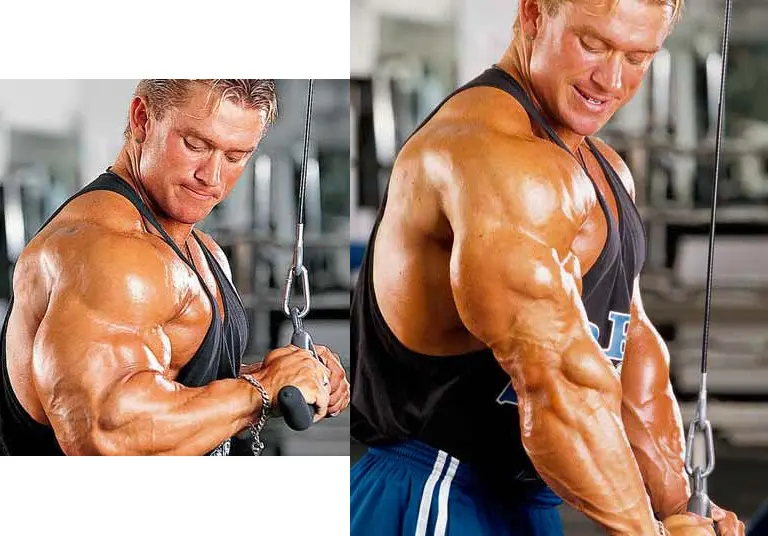
Pushdown variations are not only one of the best tricep exercises that you can do. But we’d be willing to bet they’re the most commonly utilized among gym-goers.
Quite possibly, this has something to do with the amazing contraction that you get compared to other triceps exercises (the dip is up there too). It’s a common belief that pushdowns emphasize more of the lateral or outer head of the triceps comparatively which might be true.
However, it definitely works all three heads pretty well and is a strong go-to when the goal is building muscular triceps.
Saini explains that cable pushdowns offer constant tension throughout the entire range of motion, which is beneficial for stimulating muscle growth.
Pro Tip: At the bottom of each rep, actively flex your wrists and point your knuckles towards the floor. This small adjustment maximizes tricep contraction.
| Difficulty | Beginner |
| Progression | Vary attachments (rope, straight bar, V-bar), perform single-arm variations |
| Regression | Kickbacks |
Cable Pushdown Variations:
a. Rope Pushdown
Because we use a neutral grip for rope pushdowns, many prefer it over a pronated (overhand) grip variation. Pulling the rope handles laterally away from each other, resulting in a pronounced contraction, may even allow you to feel a better contraction in the lateral head.
Whether that’s really the case, well, it’s hard to confirm. Although, many believe that building muscle is based largely on feel and intuition.
b. Reverse-Grip Pushdown
The same thing applies with the reverse grip pushdown as does what we just discussed about the rope pushdown variation. Using different hand positions seems to result in some sort of difference in how the contraction of a muscle feels. Although, this can also be said for many exercises too.
Using a single-grip handle for the reverse pushdown allows for a freer range of movement and most people would probably find that it feels better with this variation in particular.
c. Close-Grip Pushdown
This variation replicates the close-grip press except you’re standing and, of course, using cables instead of a barbell or dumbbells. And it’s actually a very effective one.
Now, there is a difference between the cable close-grip pushdown and other pushdown variations. To replicate the close-grip press, your elbows should be flared out, and typically, you’ll lean forward over the bar to maximize your pressing power.
This really forces the triceps to work, and overall, it’s a great mass and strength builder.
Best Triceps Workout For Building Bigger and Stronger Arms
Here is a five-experience tricep training routine to ensure well-rounded development:
| Exercise | Sets | Reps | Rest |
| Close-Grip Bench Press | 3 | 6-8 | 60-90 sec |
| Dips | 3 | 8-12 (or to failure) | 60-90 sec |
| Overhead Tricep Extensions | 3 | 10-15 | 45-60 sec |
| Cable Pushdowns | 3 | 10-15 | 45-60 sec |
| Triangle/Diamond Push-ups | 3 | To failure | 45-60 sec |
Triceps Anatomy
The triceps brachii is located on the back of the upper arm and runs along the humerus (upper arm bone) between the shoulder and elbow. As previously mentioned, the triceps consists of three heads: lateral (outer), medial (middle), and long (inner).
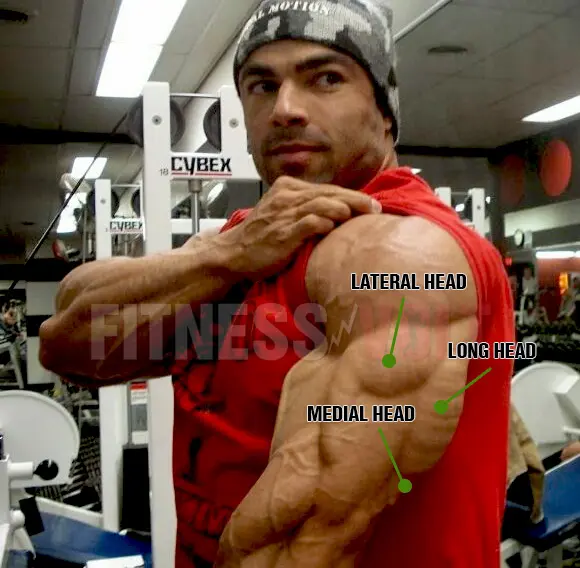
All heads have a different origin although they’re joined distally (away from the origin) to form one tendon. While the lateral and medial heads originate from the humerus, the long head originates from the infraglenoid tubercle of the scapula.
The main function of the triceps is to extend the elbow joint, whereas the biceps is an elbow flexor. The triceps can also stabilize the elbow joint during certain actions (e.g., writing).
But because the long head attaches to the scapula, it plays a small functional role in movement at the shoulder joint in addition to adduction (moving the arm toward the midline of the body), extension, and stabilization of the shoulder.
It also helps to keep the humerus within the glenoid cavity during arm adduction.
The medial head, unlike the long head, does not attach to the scapula and therefore, it does not contribute to action at the shoulder joint. However, it’s important for forearm extension, whether supinated or printed. This head is mostly covered by the other two heads.
The lateral head also does not play a role at the shoulder joint, but it helps to extend the forearm at the elbow joint.
3 Benefits of Training Your Triceps
The triceps are an important muscle of the upper arm, and we recommend that everyone make an effort to maximize their development.
A stronger press
Any press, whether that’s a bench press, overhead press, push-up, or dip, requires triceps strength. The stronger your triceps, the better you’ll be at pressing. Of course, these pressing variations require sufficient strength from other pushing muscles such as the chest and shoulders.
But for the sake of this article focused on the triceps, this three-headed muscle plays an important role in pressing movements.
Upper-body strength
You might be thinking, “Doesn’t a stronger press mean the same thing?” It does, and it doesn’t, with the difference being that we’re simply referring to the need for decent upper-body strength.
Many people surprisingly have very little upper-body strength, which can make certain daily tasks much more difficult. For example, they may have to get down to clean and not be able to get back up.
Elderly people can definitely benefit from having stronger triceps for the reason mentioned above, In addition, aging causes gradual muscle loss (sarcopenia) which can result in falls and injuries due to insufficient upper body support. However, according to a published piece from the Cleveland Clinic, resistance training can decelerate this process or even prevent it for many more years.
“The best way to limit the extent of loss of muscle strength is by staying physically active all through life,” explained physical therapist Gary Calabrese, DPT. “But if you’ve been sedentary and have lost strength, the answer is still exercise.”
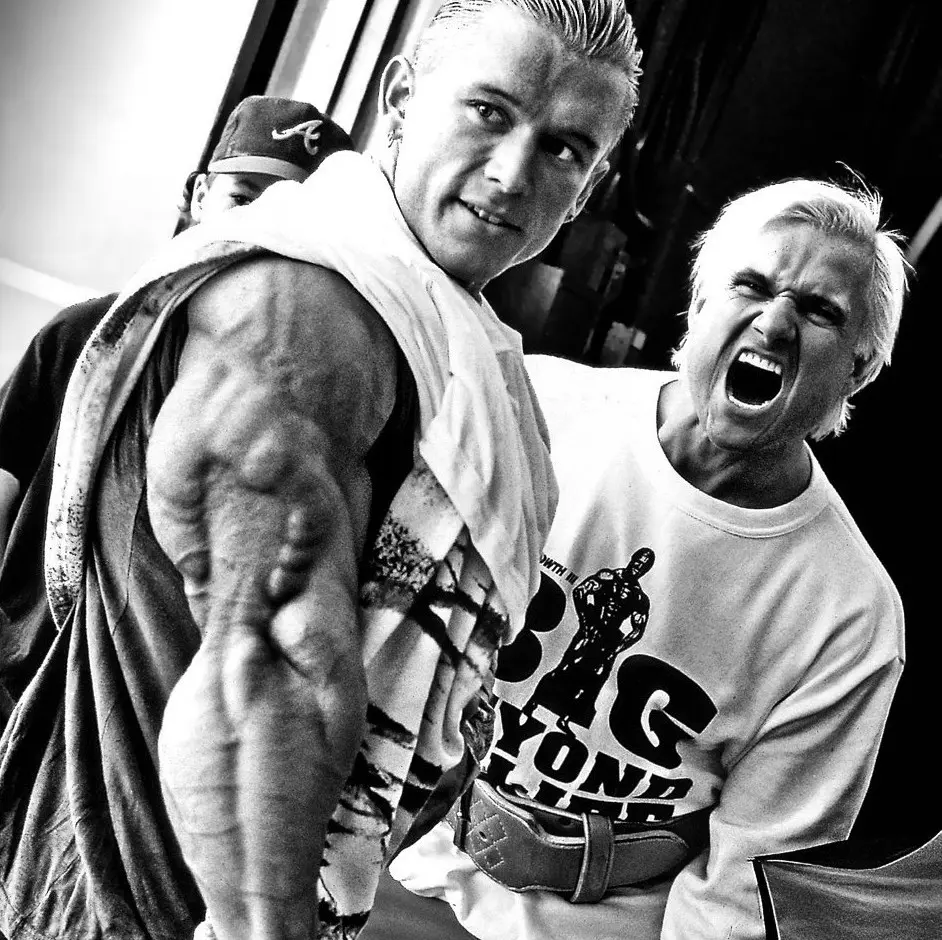
Arm aesthetics
The appearance of your arms is largely based on your genetics. You might do everything right and still be underwhelmed and disappointed that your triceps don’t look like horseshoes. And that’s completely OK. It doesn’t mean you shouldn’t do all you can to develop your triceps.
In fact, developing your upper arms as best you can will maximize their appearance. Plus, it’s always nice to show off your hard work when wearing a short-sleeve or sleeveless shirt.
But also remember that building muscle takes time and many years of consistent, hard work in the gym and kitchen. Not to mention, your sleep needs to be on point, too.
How Many Sets/Reps For Bigger and Stronger Triceps?
This honestly depends on several different factors which include…
- Exercise intensity
- Training frequency
- Weights loads
- The individual
Exercise intensity
If you want to see results as quickly as possible, you need to train with some intensity. This means really pushing yourself and not being afraid to use challenging weights. If you’re just going through the motions and lifting weights that you can perform 50 reps with, you’re not doing much.
It’s perfectly fine and even recommended to utilize various rep ranges, but the goal here is to build muscle and strength. Therefore, stick within the 5-25 rep range for the majority of your training. Your sets shouldn’t be easy.
Research shows that training heavy with low rep ranges is superior for building strength. However, higher rep ranges (although not too high) are just as effective for hypertrophy when both loads are taken to failure. (2)
Use this information to plan out your sessions and to ensure you’re getting optimal results.
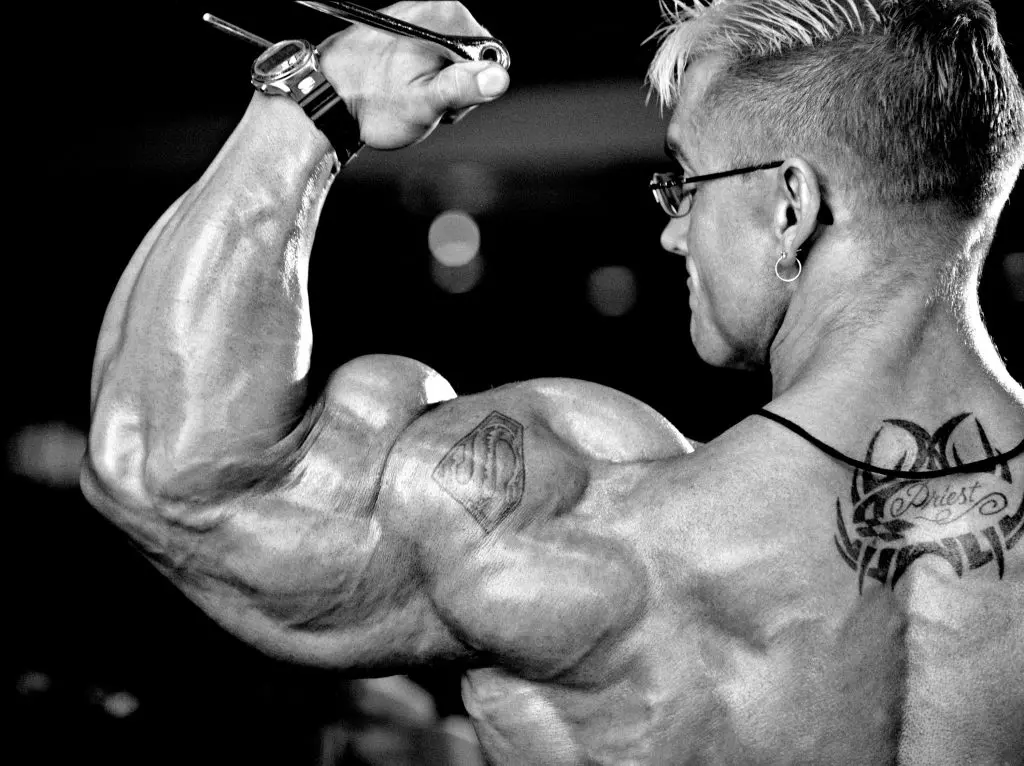
Training frequency
Generally, if you typically train a muscle very infrequently, you need to do more sets/reps in a session. That’s because you want to make sure to train with sufficient volume to adequately stimulate the muscle fibers in order to elicit maximum growth.
In contrast, the more frequently you train a muscle, the fewer sets/reps you need to do per session. You don’t want to overtrain, which is definitely a real thing. Then, your efforts would be counterproductive to what you’re trying to achieve.
Keep this in mind and plan out your weekly training regime accordingly.
Weight loads
If you’re training relatively heavy during a session, keep the volume down (‘training’ volume). Doing too many sets and reps with heavy weight can drain you, and it’s not good for your nervous system or joints. On the other hand, if you’re doing light to moderate training, then you’ll benefit from adding more volume to create that necessary stress for growth.
There are many variables to consider when constructing a good training program. But it’s also good to incorporate different forms of training, as each has its advantages.
The individual
At the end of the day, you have to figure out what works best for you. This is found through trial and error, but it’s also good to have some knowledge about training so that you can find what works best for you a little quicker.
Consistency, eating right, and getting sufficient sleep also play a big role in how much training you can do. Training is more than looking good. It’s about being healthy and listening to your body. And that’s when you have a good experience and start to really see progress.
Can You Isolate A Tricep Head With a Specific Exercise?
The short answer is absolutely not. You can’t isolate one of the three tricep heads while leaving the other two out. However, it’s a common belief that it’s possible to emphasize a head or portion of a muscle. For example, the tricep rope pushdown performed by pulling the rope handles away from each other during the contraction may emphasize the outer head.
And we explained that because of the attachment of the long head, the best way to maximize its contraction is by extending the arms behind the body.
And just from personal experience (you’ll probably agree), it’s easy to be convinced that it’s possible to emphasize a portion of a muscle that has more than one head especially when they’re attached at different points anatomically.
Another good example is the various muscles of the back, which all have different functions. Otherwise, we wouldn’t need so many back muscles. Consequently, we know the importance of utilizing various exercises that provide resistance against those functions, therefore activating certain muscles a bit more than others.
Although, all back muscles are engaged to an extent regardless of the exercise.
Wrapping Up
In my opinion, these are the best triceps exercises that you can do to build bigger and stronger arms. Of course, your bench and overhead presses are going to also contribute. But if you want to maximize your triceps development, then I believe isolation work is also just as important.
It’s a big muscle group that needs attention, and now, you have plenty of variations to choose from and include in your arm training sessions.


